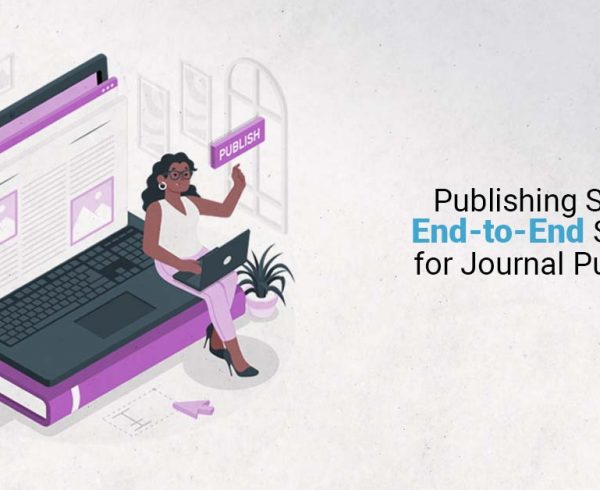For most writers, the first draft is never really the best. Whether they are writing an article, a blog post, a story, a book, or simply their memoir – the piece just has to be revised, amended, reworked, and corrected, at every step. This is because unless and until a written copy undergoes professional manuscript editing for factual, grammatical, linguistic, or technical errors, it would neither be able to meet its stated objectives nor would it become equipped to create the right impact. It is precisely for this reason that writers across the world have now begun to rely on the diligent, rigorous, and time-tested practice of professional copy editing and copy editing services.
Table of Contents:
- What is Copy Editing?
- 10 Best Copy Editing Techniques and Practices
1. Cutting Long Sentences Short
2. Removing Needless Punctuation
3. Replacing Complicated Words
4. Eliminating Redundancies
5. Using Active Instead of Passive Voice
6. Reducing Prepositions
7. Paying Attention to Details
8. Cutting Out Repetition
9. Amplifying the Writer’s Voice
10. Serving the Reader - The Way Forward
What is Copy Editing?
Copy editing, in simple words, is the process of reshaping written material in such a way that its readability is enhanced without compromising its basic essence. The primary job of a copy editor including professional manuscript editing, is to identify subject gaps, simplify writing structures, overhaul rough drafts, and streamline creative communications. Throughout the entire publishing cycle, copy editing provides writers with the exclusive opportunity to improve their final product, so that they can turn it into a more dynamic, engaging, competitive, and reader-friendly piece of work.
While copy editing, as a discipline, is highly personal and subjective, there are a few standard tools and techniques which are followed by experienced copy editors, universally.
Listed here are the 10 best copy editing techniques and practices which most copy editors employ to refine, filter and fine-tune the textual composition before them.
10 Best Copy Editing Techniques and Practices
1. Cutting Long Sentences Short
The first rule of good copy editing is to cut long sentences short. Sentences that are both lengthy and extensive, generally develop the propensity of losing reader interest. They often contain several conflicting ideas, none of which can reach the target audience because the reader sheds focus midway. Short sentences, on the other hand, are crisp, to the point, and highly engaging.
2. Removing Needless Punctuation
A simple comma is considered to be quite self-sufficient in punctuating an entire written text. This is because a comma can easily convey adequate information in an incredibly straightforward way. Littering a written piece with other forms of punctuation like colons, semi-colons, and parentheses tends to take away the content’s flow and eloquence.
3. Replacing Complicated Words
All articles, blogs, and stories which are written in a simple and understandable language, largely do well with the audience. The readers tend to identify with the writer’s intent and associate with it on an emotional and cognitive level. By using complicated words instead, some writers isolate their audience. It is thus, the job of a copy editor to replace jargon with common, more familiar words.
4. Eliminating Redundancies
Redundancies, in professional copy editing, are identified as specific phrases, words, and expressions that lead to needless verbal repetitions. While not noticeable in the first go, these redundancies can prove to be extremely tiresome from a grammatical and linguistic perspective. Some usual redundancies used across the spectrum are ‘planning,’ ‘gifts,’ ‘foreign imports,’ etc.
5. Using Active Instead of Passive Voice
In English grammar, both active and passive voices are considered to be an immensely gratifying form of expression. However, while building a narrative, copy editors generally prefer active voice over passive voice. It is so because using an active voice makes the writing very concise, succinct, and efficient. It also cleans up a sentence of unnecessary words and insignificant terms.
6. Reducing Prepositions
Prepositions, by definition, are words that express a relation between nouns/pronouns and other elements in a sentence. These words, while helpful on some occasions, can get in the way of good writing. They don’t just prolong sentences by elongating their meaning, but when cut, they also shorten the sentence size by almost half! This is why copy editors, as a standard practice, ceaselessly replace prepositions with more direct words.
7. Paying Attention to Details
A written piece of work does not just have to be checked for its spelling, punctuation, and grammar. It also has to be edited for its narrative, flow, and consistency. Bearing this in mind, copy editors ensure that they scrutinize the whole text before them, in a minute and comprehensive manner. They pay attention to every little detail and make conscious efforts to rectify mistakes.
8. Cutting Out Repetition
Quite like redundancies, repetitions too are a major roadblock in the success of most writing ventures. While editing and proofreading their work themselves, writers do not realize the number of words, sentences, or ideas that they have repeated. But copy editors are well-trained to look for these kinds of errors. They aim to filter the text and lend it a crisp and refreshing aura.
9. Amplifying the Writer’s Voice
The basic purpose of a decent write-up is to deliver in words, whatever the writer wishes to communicate through thoughts. This is why most copy editors make it a habit to amplify the writer’s voice and cut it down on their own. They limit their interjections to mere comments, suggestions, queries, and explanations so that their perceptions, prejudices, and biases are not reflected in the write-up.
10. Serving the Reader
Last but not least, copy editors around the globe make it a practice to serve the reader by delivering clear, concise, and error-free content. While professional copy-editing calls for them to serve the needs of both writers and publishing houses, they make sure that their ultimate objective remains to satisfy the audience’s need to read informative, powerful, and delightful content.
The Way Forward
According to recent research conducted by Copywriter Today, almost 56% of marketers agree that well-edited and compelling copies, often enhanced through professional manuscript editing, tend to drive approximately 7-8 times the usual traffic. This means that the power of the written word to hold attention, trigger imagination, and generate action is truly immense!
It is primarily due to this reason that the roles and responsibilities assigned to a professional copy editor are likely to enter a new phase in the future. Professional editing will slowly turn into a lucrative business where maintaining quality, assuring accuracy, eliminating bias, and rationalizing verbosity will begin to gain prime importance. Hence, you should go for the best copy editing services you can choose. Under such circumstances, deploying the best copy-editing practices to bring out the latent beauty of a written piece of art will surely serve as a good way to offer verbal clarity, textual transparency, and expressive ideation.
As a writer or copy editor, if you want to know more about the copy editing practice, professional copy editing, and everything else that it entails – Drop us a note at marketing@hurix.com.











